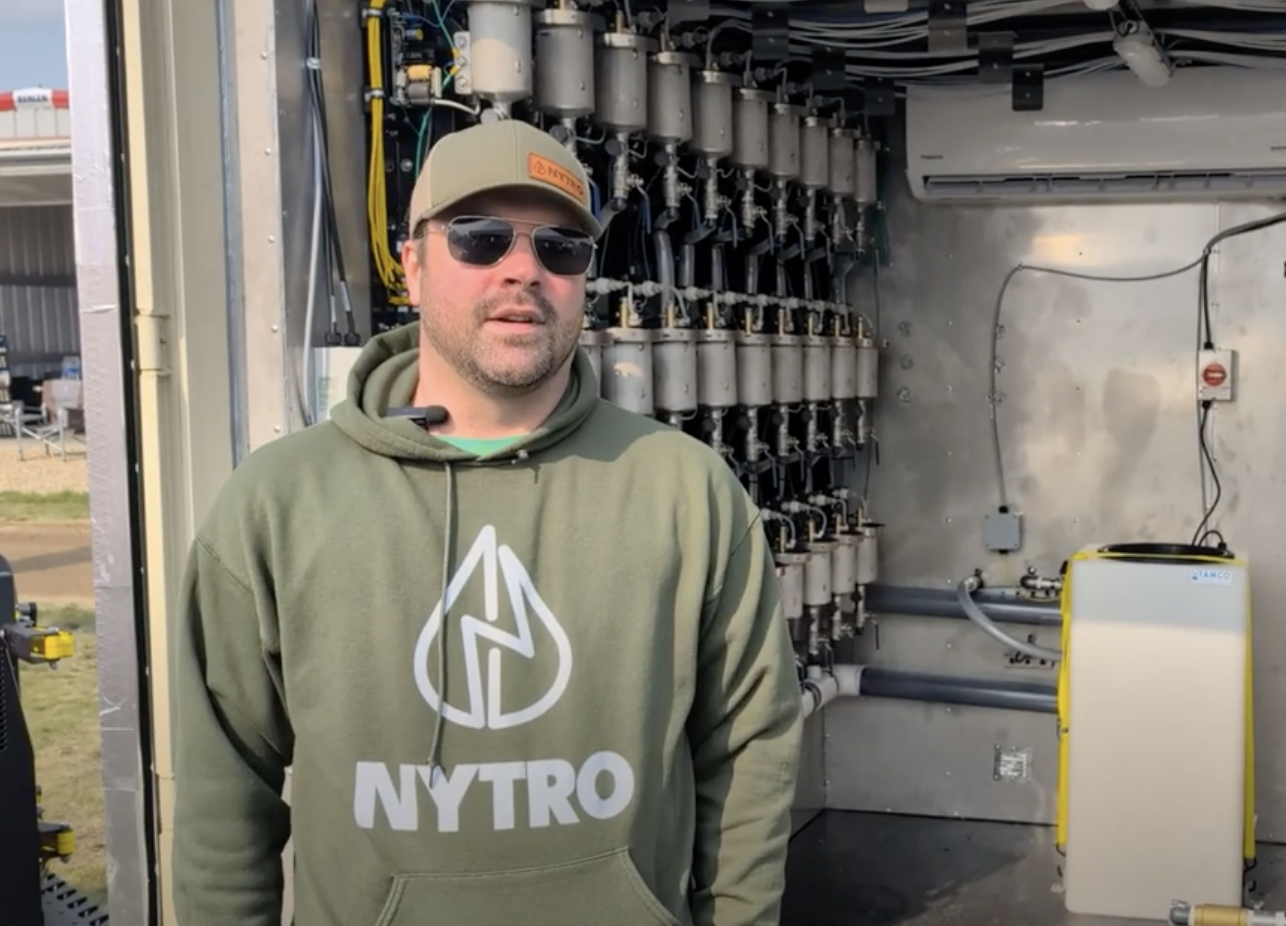When canola and lodged cereals build up on a divider board, it leaves those big clumps in the swath that farmers jokingly refer to as beaver huts.
Crops in these beaver huts never cure, and the greens affect the grade. The combine can’t help but grab and pull them through.
“All this costs you money, and it’s impossible to ease your combine into a beaver hut,” says Merlin Badry of Forestburg, Alta., inventor of the Roto-Shear crop cutter.
“It doesn’t matter how careful you try to be, the combine always grabs the whole pile at once and shoves it into the feeder house.”
Read Also

VIDEO: Green Lightning and Nytro Ag win sustainability innovation award
Nytro Ag Corp and Green Lightning recieved an innovation award at Ag in Motion 2025 for the Green Lightning Nitrogen Machine, which converts atmospheric nitrogen into a plant-usable form.
Badry said farmers figured out decades ago that vertical crop cutters mounted on the swather’s divider boards can virtually eliminate piles in the swath.
Those earliest farm-built crop cutters used big circular buzz saw blades from saw mills, and a variety of commercial designs are now available in Western Canada.
However, Badry saw that the vertical spinning blades on crop cutters were inherently dangerous and thought he could come up with a safer design.
One of his neighbours had tried two popular cutter systems, but there were problems.
One morning eight years ago, the neighbour came to Badry and said, “there’s got to be something better. I just about got caught in the knives this morning. I was pulling a plug out of the swather. The pressure buildup in the hydraulics spun the knives. Just missed my fingers.”
Badry said commercial and home-built cutters typically have their own hydraulic circuit with their own controls. When it stalls, hydraulic pressure can build in the lines until the machinery is free to move again. The residual hydraulic pressure can then spin the cutter. Fingers are no match for residual power left in the hydraulic lines.
Badry started working on the problem and later the same day delivered to his neighbour what turned out to be the first Roto-Shear prototype.
“I cut out a rotor 16 inches in diameter and mounted six blades around the perimeter. I rigged that to a mounting plate so he could install it on his divider board. Then I brought it out to him.
“Next morning he called early and wanted me to come right out. I thought to myself, ‘oh no. It fell apart.’
“When I got there, he showed me how well it worked and said he wanted three more as soon as possible. So that’s how this whole thing got started.”
Once those prototypes were working, Badry eliminated the dedicated crop cutter hydraulic circuits from his design by plumbing the cutter motor into the existing circuit for the reel or canvas.
Each Roto-Shear has a dedicated hydraulic motor, driven only by the factory-installed hydraulic circuit on the swather or combine.
That saved about $200 for the flow control and divider, but more importantly, it stops the cutter blade from turning every time the operator stops to clear a plug.
Badry warns that his Roto-Shear runs quietly, which is why he insists his customers install the hydraulic motor in series with the reel or canvas motors.
“Stopping that cutter blade is most important for the operator, as far as I’m concerned. When he stops the reel or canvas, the Roto-Shear automatically stops, too.”
His spinning cutter fastens directly to the output shaft of the Roto-Shear hydraulic motor. Each motor pulls a maximum of one horsepower and requires five gallons per minute. The Roto-Shear units are exactly the same left or right.
Badry said the unit has no bearings, clutches, extra shafts, flow controls, diverter valves or grease zerks. He made a good guess when he put six blades on the original experimental unit because they are still built with six blades.
He said the blades often last five years or longer in their original position. Then, because they are sharp on both sides, they can be switched left to right for another five or more years.
“Except for replacing blades if you hit a rock, these things are totally maintenance free. The blades cut high up in the crop where there’s not much resistance so they last a long time.
“Cutting down low in peas or downed cereals, of course you can hit a rock. Other than that, there’s nothing much to go wrong. The hydraulic motors can run for years on end without stopping.
“We’ve got customers who’ve told us they run their Roto-Shear right down to 100 r.p.m. if the canola isn’t too green, and they still get excellent cutting.”
A producer who doesn’t want to run the Roto-Shear doesn’t need to remove it because a metal holster covers the blade and doubles as a divider board.
Badry said the project has been a process of constant redesign and upgrade. He has sold more than 6,000 units and last year fell just slightly short of the 1,000 mark with 990 units sold. The price is $1,035 per side.
For more information, contact Merlin Badry at 780-582-3637 or visit www.rotorshear.com.

















